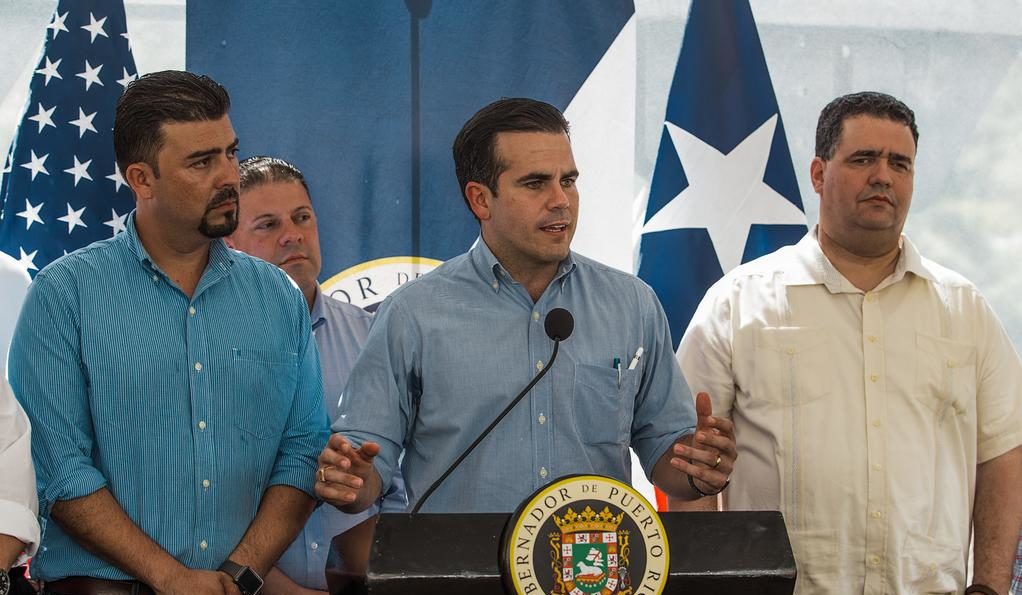Only one day after the Chicago City Council approved Mayor Rahm Emanuel’s plan to move the city to 100% renewable energy by 2035, Puerto Rico has followed suit with Governor Ricardo Rosselló signing PS 1121, which sets a 100% by 2050 renewable electricity mandate for the island.
Rosselló’s signature is hardly surprising, given that he was a vocal supporter of the call to entirely decarbonize the island’s electricity supply using renewable energy. And according to P.J. Wilson, the president of the Solar + Energy Storage Association of Puerto Rico (SESA-PR), this is just the beginning.
“We have to begin this very long and very tedious process of implementation of all the things in the bill,” Wilson told pv magazine. This includes “having the dialogue with PREPA to ask them to implement the laws right away, in the way that we want them to.”
Some of these details in PS 1121 include:
- banning coal plants starting in 2028
- instituting a maximum 90-day utility approval period for commercial and industrial solar projects (from 25 kW and 5 MW)
- establishing automatic interconnection to the grid for residential solar systems under 25 kW
- exempting energy storage systems from sales taxes
The push for gas
The signing of the 100% renewable energy law comes as the U.S. Department of Energy is calling for the island to deploy more natural gas infrastructure. According to UtilityDive, this week DOE Assistant Secretary Bruce Walker argued before a U.S. House Committee that 1200 to 1600 MW of natural gas could “greatly enhance the reliability and disaster resilience of Puerto Rico’s power system”.
The fact that the vast majority of power outages are caused by power lines going down makes such statements questionable, and the Trump DOE may be instead speaking to its own interest in expanding markets for domestic gas production.
Nor is DOE the only party that is looking to lock in gas infrastructure on the island; as previously reported by IEEFA the island’s utility has signed contracts with Miami’s New Fortress Energy to convert its San Juan power plant from petroleum to natural gas and to build a new liquefied natural gas (LNG) import facility.
Gas + solar vs. coal and oil
But while DOE Assistant Secretary Walker has said that his plans “could be at odds” with the 100% renewable energy law, SESA-PR’s Wilson does not see it that way.
Popular content
“This is not our fight,” states Wilson. “We are not a group that is fighting for or against natural gas expansion.”
One of the reasons is the very large volume of solar that needs to be put online to meet even the interim goals of PS 1121, which includes moving to 40% renewable electricity by 2025. This is up from an estimated 2% in the fiscal year ending in mid-2017 – a 20x increase, assuming no increase in electricity demand.
Wilson also notes that the island still gets 17% of its electricity from coal, as well as 47% from petroleum. As such there is plenty of room for gas to replace oil and coal without competing against the deployment of renewables.
In this if nowhere else, there may be no conflict between SESA-PR and PREPA’s goals. Wilson notes that PREPA CEO José Ortiz’ stated goal is to transform the island’s electricity system to 60% gas and 40% renewable energy.
“Our part is the 40%,” states Wilson.
Opportunities for solar + storage
Residential solar companies clearly see this as a massive opportunity. Sunrun notes that the law is clear that all scales of renewable energy production, including rooftop solar, will qualify for renewable energy credits.
“Embracing technology like home solar and batteries will play a critical role in accomplishing these trailblazing goals, putting the people of Puerto Rico at the center of the solution with local jobs and clean, resilient, reliable, energy for homes across the island,” reads a statement by Lynn Jurich, president and CEO of Sunrun.
This content is protected by copyright and may not be reused. If you want to cooperate with us and would like to reuse some of our content, please contact: editors@pv-magazine.com.


No wonder Equanatech is being embraced in Puerto Rico with open arms their inverters will be used all around the Island !
A good Canadian company and a great product with reach around the globe go solar go !!!
http://www.eguanatech.com/investors/news/
That is going to require a lot of battery storage to handle the swings in energy demand that weather and cloud cover can produce. Better do some simulation studies to figure out how to handle those conditions or you may be asking for outages that you are not prepared for. How are you going to handle some of the storms that the islands see? I see energy swings of as much as 95% over a 2 or 3 day period for my solar array.